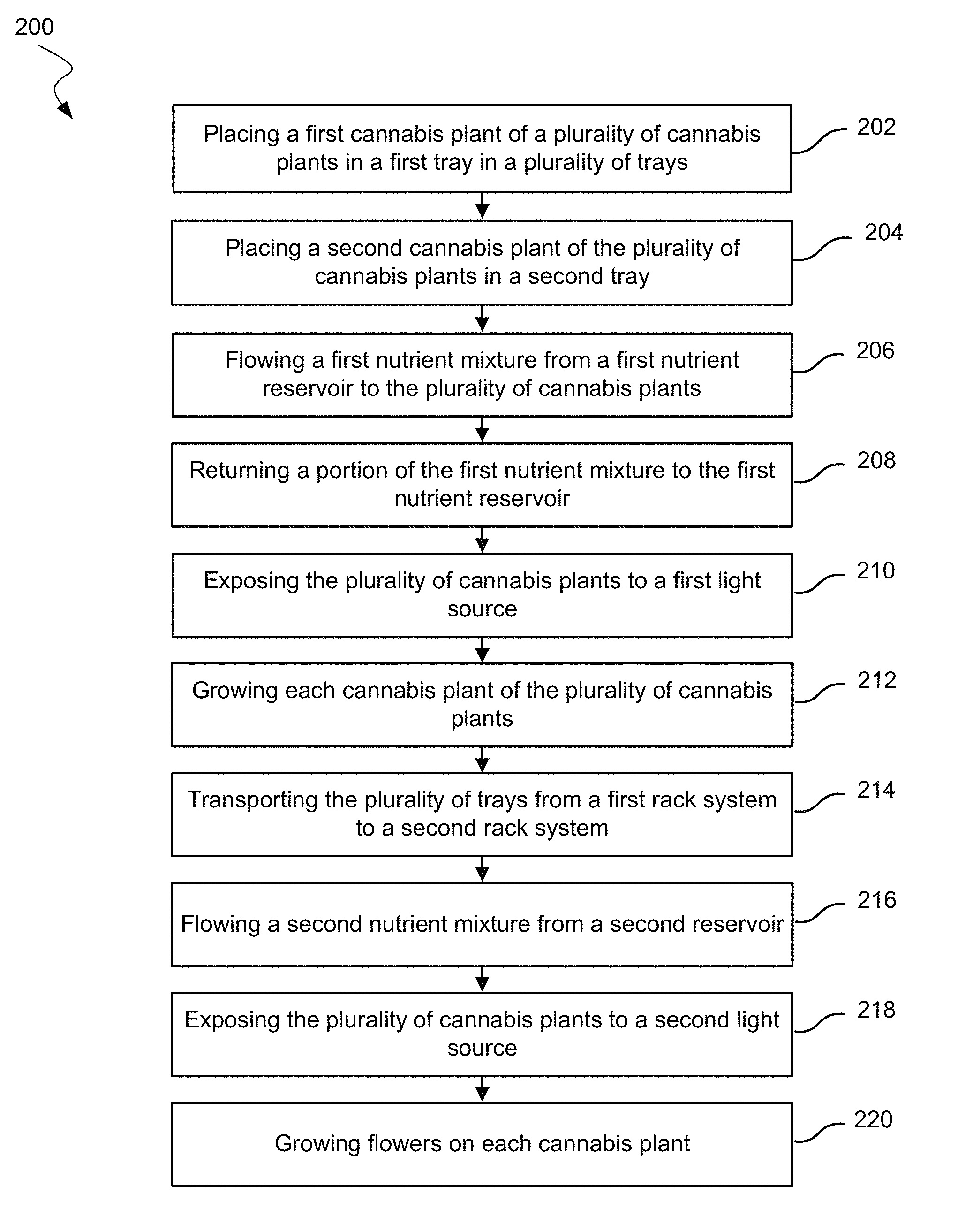U.S. Patent No. 10,334,796 B1 issued on July 2, 2019, for “Methods and Systems of Cultivation,” to inventors Eric Speidell and Kyle Speidel of Denver, Colorado. The applicant/assignee is MJ Brain Bank, LLC, of Denver, Colorado.
Figure 2 illustrates the basic algorithm of the claimed invention:

This is a utility patent, specified in 35 U.S.C. §101, because it describes a new process and apparatus for cultivation of the cannabis plant. The sole independent claim 1 recites:
- A method of cultivating cannabis hydroponically, the method comprising:
placing a first cannabis plant of a plurality of cannabis plants in a first tray of a plurality of trays;
placing a second cannabis plant of the plurality of cannabis plants in a second tray of the plurality of trays, wherein:
the first tray is disposed on a first shelf of a first rack system,
the second tray is disposed on a second shelf of the first rack system,
the first shelf is at a first height,
the second shelf is at a second height, and
the first height is different from the second height;
flowing a first nutrient mixture from a first nutrient reservoir to the plurality of cannabis plants;
returning a portion of the first nutrient mixture to the first nutrient reservoir after flowing the first nutrient mixture to the plurality of cannabis plants;
exposing the plurality of cannabis plants to a first artificial light source having a first limited spectrum;
growing on the first rack system each cannabis plant of the plurality of cannabis plants without producing flowers;
transporting the plurality of trays from the first rack system to a second rack system;
flowing a second nutrient mixture from a second nutrient reservoir to the plurality of cannabis plants;
exposing the plurality of cannabis plants to a second artificial light source having a second limited spectrum, wherein the first limited spectrum comprises a different wavelength range than the second limited spectrum; and
growing flowers on each cannabis plant of the plurality of cannabis plants on the second rack system.
Some other interesting notes from the ‘796 patent: the patent reads very broadly, both the claims and the specification, on hydroponic cannabis cultivation. This is partly due to the fact cannabis patents are a relatively new phenomenon, and the there is limited patented prior art. Therefore, it is easier for these early inventors to draft very broad claims to protect their invention. The broad claims can then be used to assertively against potential infringers, or defensively either through licensing deals and discouraging others from filing their own patent applications in this specific space.
The Cooperative Patent Classification (CPC) is A01G, or “Horticulture; cultivation of vegetables, flowers, rice, fruit, vines, hops or seaweed; forestry; watering,” with subclass 31/06, “soiless cultivation; e.g., hydroponics, with hydroponic culture on racks or in stacked containers,” and subclass 2031/006, “hydroponics with means for recycling the nutritive solution.”
Due to patent term adjustments under 35 U.S.C. §154(b) of 327 days, the patent term under 35 U.S.C. §154(a)(2) is more than 20 years; the patent expires on April 10, 2037.
This is yet another interesting patent involving cannabis-based products. Please contact Yonaxis for more information on any of the IP processes described in this posting if you have any questions.
